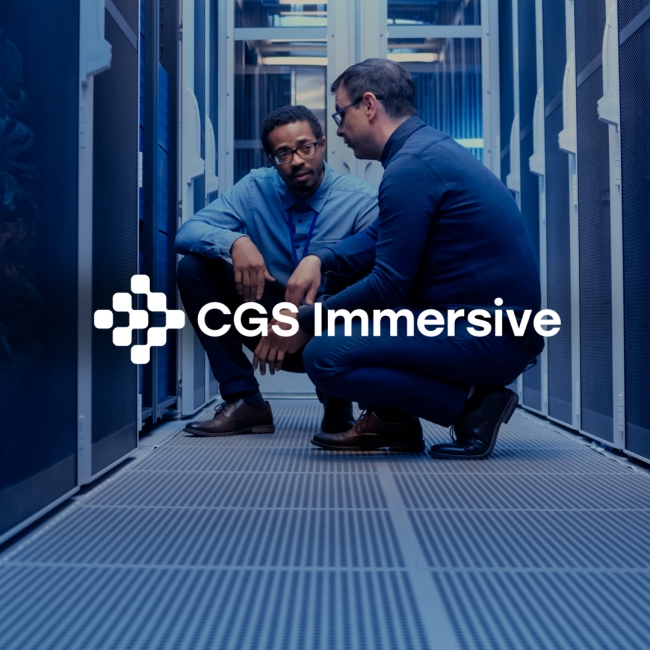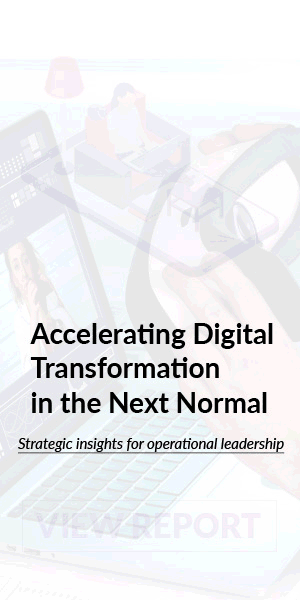Rethinking Learning & Development with CGS Immersive: The New Standard for Enterprise Corporate Learning

As organizations navigate tumultuous change, effective enterprise learning that truly upskills workers for today’s business context is a necessity, not a luxury. Yet, for L&D leaders and business unit owners—especially in complex, high-turnover, and regulated industries—scaling training remains a persistent challenge.
The traditional playbook of classroom sessions, shoulder-to-shoulder training, and static eLearning is increasingly out of step and difficult to efficiently scale with the on-the-job demands of a distributed, rapidly evolving workforce.
Why the old L&D models fall short
Classic approaches often come with high costs, extended timelines, outdated approaches, and limited flexibility.
Long lectures and static e-learning modules -- primarily passive approaches -- often fail to engage employees, leading to low retention and poor knowledge transfer. Worse, the content grows stale and outdated quickly as they do not keep up with the pace of technological and industry change. These approaches also lack personalization, forcing a one-size-fits-all approach that doesn’t accommodate the way individual people learn best. These constraints are misaligned with the expectations for speed, agility, and measurable impact in modern enterprise learning.
A new era: blended and immersive learning
Forward-thinking organizations are now embracing a new paradigm—one that blends digital, in-person, and on-the-job methods for personalized, just-in-time learning at scale. Here’s where CGS Immersive and its tech solutions, TeamworkAR and Cicero, are helping to set the new standard.
Extended Reality (XR) and TeamworkAR: making complex training accessible
Technologies like extended reality (XR)—encompassing VR, AR, and MR—are enabling hands-on, experiential learning in both simulated and real-world environments. TeamworkAR by CGS Immersive empowers enterprises to replicate complex or hazardous job settings safely, cost-effectively, and repeatedly. Because these immersive solutions are delivered in virtual or augmented environments, employees can build skills and practice procedures without interrupting day-to-day operations. Consider these use cases:
- Manufacturing operator training: A heavy equipment manufacturer now uses VR through TeamworkAR to train technicians in assembling pneumatic systems. Instead of shadowing an expert or waiting for live access to machines, trainees can practice procedures in a virtual environment. Errors are safely corrected in real time, and employees are production-ready faster—cutting training time by up to 50%.
- Commercial aircraft maintenance: In aviation, AR-enabled headsets powered by TeamworkAR overlay step-by-step repair instructions while keeping both hands free to work. This reduces training dependency on printed manuals and accelerates troubleshooting in real-time environments. These approaches not only lower the risk of costly mistakes but also reduce machine downtime and the labor hours traditionally spent on hands-on training.
Social learning in collaborative VR
The social dimension of learning must not be lost in the digital age. TeamworkAR supports collaborative VR environments where employees can interact, problem-solve, and practice together in shared virtual spaces.
For instance, in a VR-enabled manufacturing simulation, multiple learners anywhere in the world can collaboratively learn how to operate complicated equipment, communicating using built-in voice chat, and responding to real-time challenges—just as they would on the production line. This kind of experiential, peer-to-peer learning fosters soft skills like communication, collaboration, decision-making, and leadership, all within a highly engaging, risk-free environment.
Cicero: AI-powered, unscripted roleplay and real-time coaching
A true breakthrough in immersive learning is Cicero, CGS Immersive’s AI-powered roleplay tool. Unlike scripted simulations, Cicero enables dynamic, unscripted conversations with lifelike avatars outfitted with a variety personas and personality types that adapt in real time. Think about use cases like these:
- Aviation customer service: At a major airline, customer service agents and cabin crew use Cicero to interact with irate passengers in a variety of scenarios such as flight delays, lost baggage, or missed connections. Because Cicero can shift tone, introduce new variables mid-conversation, or even escalate the emotional intensity, the role play feels unpredictable, realistic, and authentic. After the session, Cicero grades the conversation, providing personalized coaching based on how the agent managed the interaction—from listening skills to the language of caring the conveys empathy. This type of adaptive learning offers a safe space to build soft skills, make mistakes, and improve—all without the awkwardness of in-person role playing or the need for a skilled facilitator.
- Food services: In a quick-service restaurant setting, frontline workers use Cicero to practice handling difficult customer interactions. The AI simulates a range of personalities and scenarios—from angry diners to confused first-time guests—adapting its responses based on the employee’s tone, sentiment, language, and word choice. Each session ends with real-time feedback and coaching, helping staff improve their communication and de-escalation skills.
Blended virtual instructor-led training: scalable, flexible, and targeted
When training must scale quickly across hundreds or thousands of employees, blended virtual instructor-led training (VILT) powered by CGS Immersive and TeamworkAR offers unmatched flexibility. This approach integrates digital eLearning, live workshops, immersive VR/AR simulations, and AI-powered roleplay with Cicero. New hires complete foundational modules online, practice skills in virtual simulations, and reinforce learning through on-the-job mentorship—all without costly travel or operational downtime.
Here’s a great example of how it all comes together. A blood bank implemented a blended virtual instructor-led program to train new hires on technical skills using a curated blend of virtual reality, augmented reality, microlearning (web-based training and expert video), and Cicero AI roleplay. The program provides regulated technical training on activities such as medical screening, phlebotomy, red blood cell and plasma manufacturing, cryoprecipitate manufacturing, platelet manufacturing, and immunohematology testing. Learners access the virtual classroom and content on a tablet as part of a synchronous instructor-led experience, with content also accessible during on-the-job training sessions.
The program saved the blood bank hundreds of thousands of dollars in training costs while also improving performance. Training time was reduced by 60%, while knowledge retention scores improved by 80% due to repetition and on-the-job reinforcement.
This kind of approach is particularly effective in high-turnover environments, where speed to competence is critical.
AI-powered personalization and learning analytics
AI is unlocking a new level of personalization in enterprise learning. By analyzing learner behavior and performance data, CGS Immersive’s solutions adapt content in real time and recommend targeted modules to address individual gaps.
Going back to the airline example, the CGS Immersive client uses AI to analyze how ground crew staff perform in safety simulations. If a team member struggles with aircraft marshalling or baggage handling protocols, the system assigns targeted content to address those specific challenges. Over time, AI tracks improvement and helps the L&D team refine curriculum across the organization. This data-driven feedback loop ensures that employees get exactly the training they need—no more, no less—making learning more efficient and impactful.
Striking the right balance: technology and human judgment
While CGS Immersive’s technology solutions deliver remarkable scalability and precision, not every learning challenge can be automated. Human judgment remains essential in areas requiring ethical nuance, cultural sensitivity, or complex compliance interpretation. The most effective learning strategies blend automation for repeatable skills with human-led coaching and mentorship for complex, judgment-based scenarios—ensuring technology empowers, rather than replaces, human expertise.
Transforming L&D from cost center to strategic imperative
Training Industry has highlighted that an insufficient focus on L&D risks decreased employee engagement, higher turnover rates, skills gaps, and a stagnation in innovation. Immersive learning has the potential to finally give L&D leaders to unequivocally show the impact of their initiatives on business objectives and pivot the perception of L&D as a check box and cost center to a relied upon business partner and imperative.
Organizations adopting immersive solutions such as XR, AI and custom content often see measurable cost savings and operational improvements within the first year, as measured by:
- Reduced training time and operational downtime
- Fewer travel and classroom expenses
- Lower error rates and safety incidents
- Higher retention and faster onboarding
- Scalable programs that grow with your business
Why now? Future-proofing the workforce
Continuous upskilling and reskilling are now strategic imperatives. Immersive and blended learning enable organizations to move from reactive, one-size-fits-all approaches to proactive, agile workforce development.
Whether training a technician to operate new machinery, onboarding seasonal staff in food service, or preparing pilots for updated safety regulations, today’s immersive learning tools make it faster, leaner, less expensive, and more effective.

